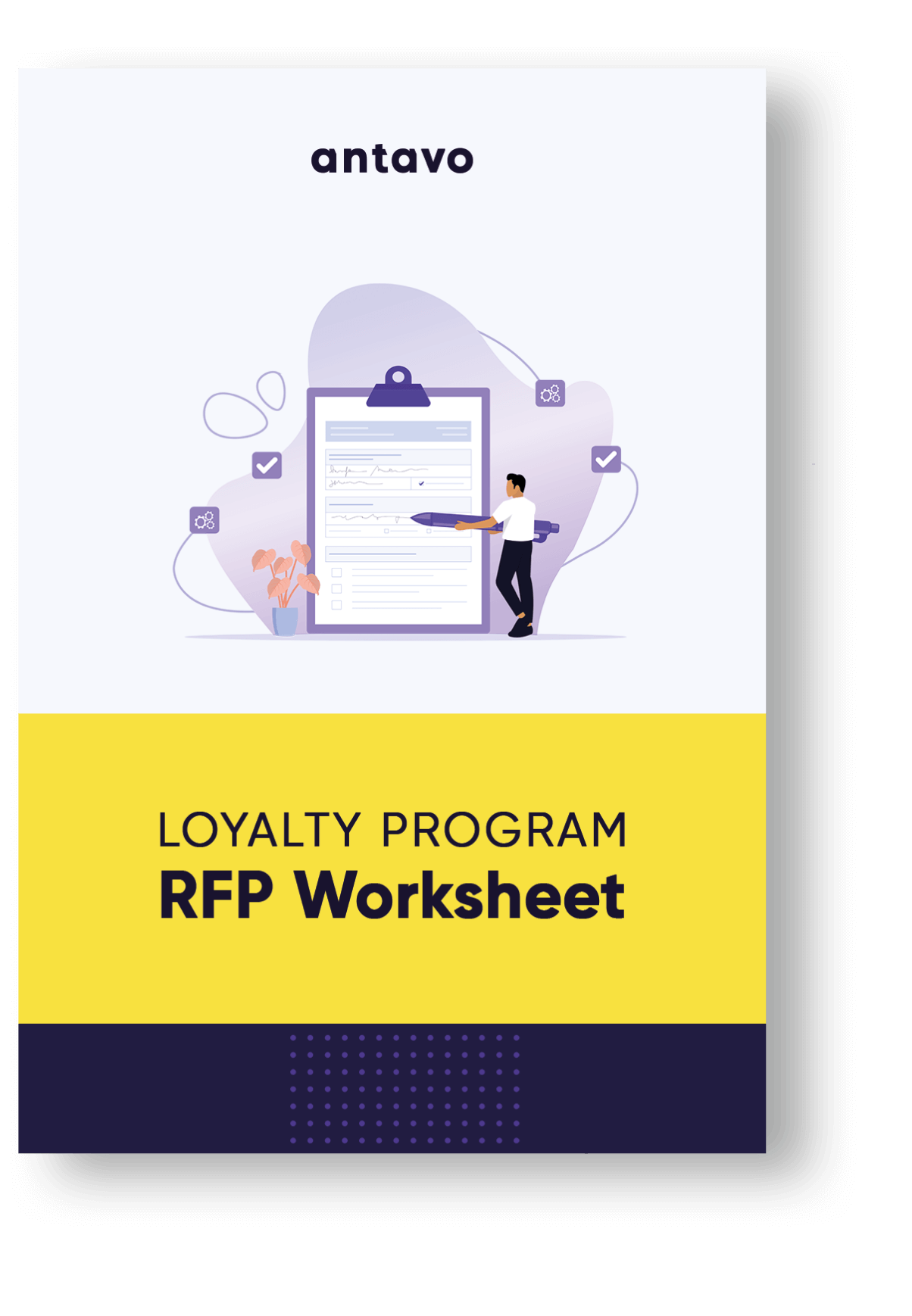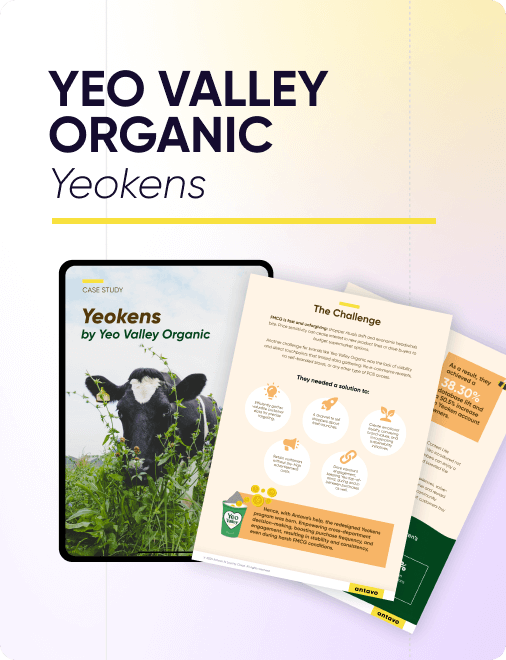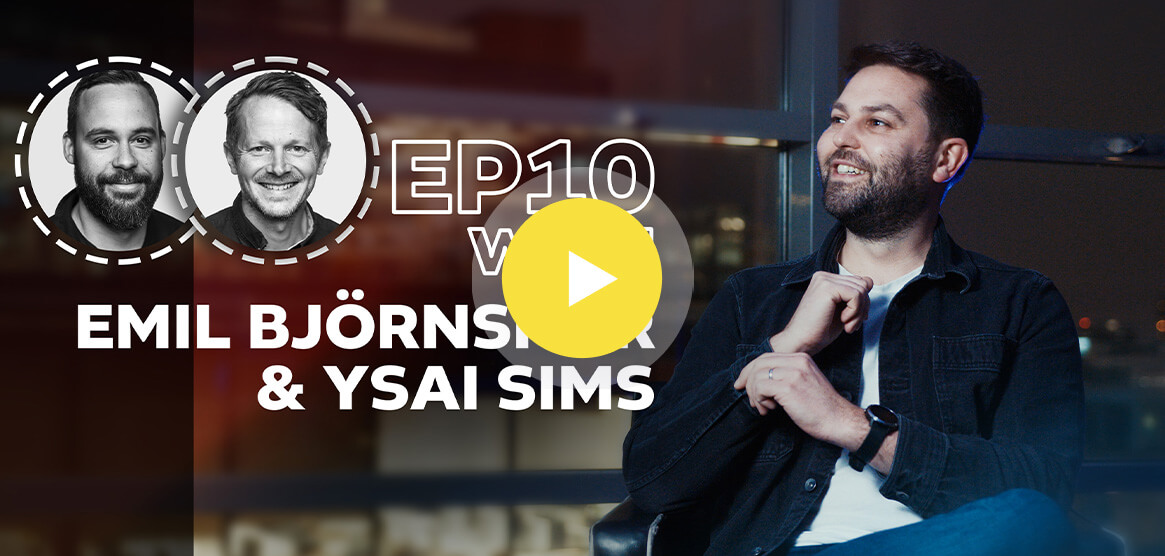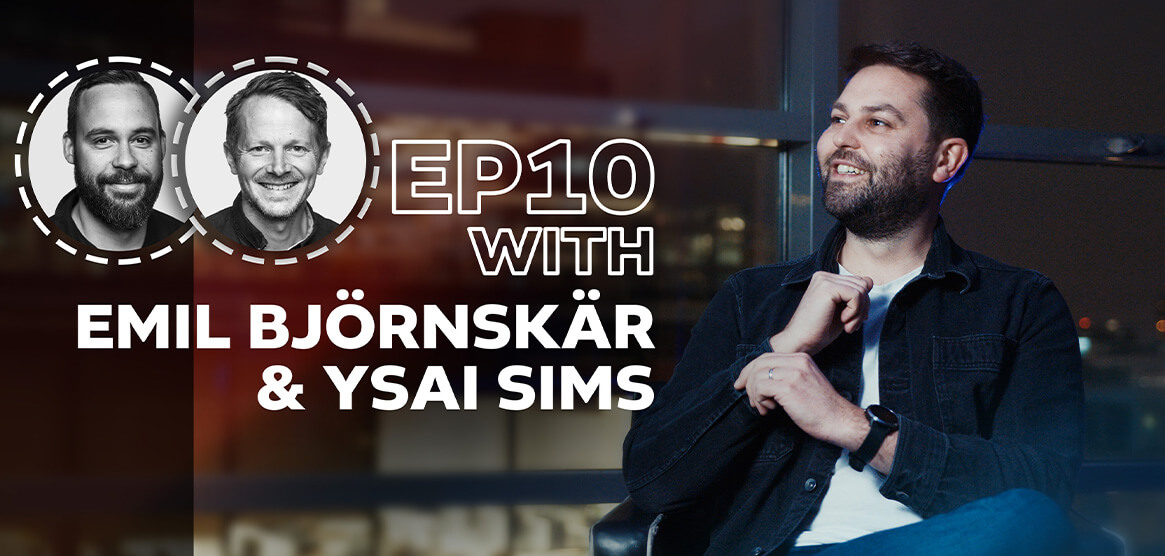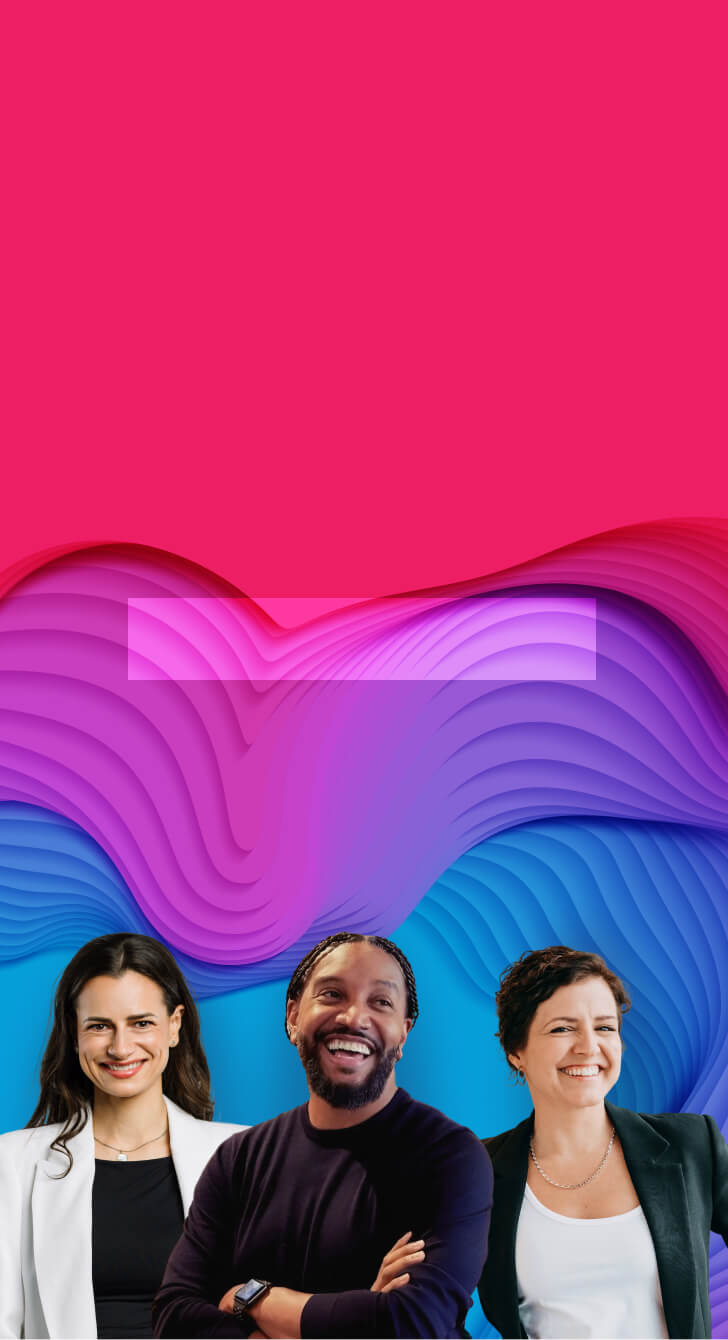Our loyalty experts for the tenth episode of the Loyalty Stories podcast are Emil Björnskär – Senior Consultant & Head of MarTech and Partnerships, and Ysai Sims – Senior MarTech Consultant, both from Miltton Insights.
The interview for this podcast has been a valuable source for Antavo’s Global Customer Loyalty Report 2024. Make sure to download it for over 30 statistics on loyalty program trends.
This week, with Emil and Ysai’s expert insights, we take a look at their personal favorite loyalty programs, their proudest project moments (featuring Co-op), and explore why the “everybody gets a discount” method doesn’t really work. We also take a peek at the shift away from traditional earn-and-burn programs, why companies are now turning toward loyalty vendors, and how loyalty became a force on the market.
Highlights from our conversation with Emil and Ysai:
- The importance of pulling value, and emotional connection into focus
- Why going from in-house tech to platform providers is worth it
- The biggest advantages of utilizing AI and recommendation engines
- Two questions every leader needs to answer when it comes to loyalty programs
Learn more:
- LinkedIn profile of Emil Björnskär
- LinkedIn profile of Ysai Sims
- The Miltton Insights website
- A Closer Look at Loyalty Programs in Grocery & Food and Beverage
- Book a demo with Antavo’s loyalty experts
Charlie
Welcome to Loyalty Stories, Antavo’s podcast on customer loyalty and loyalty programs. I’m Charlie Hawker, partner manager for UKI, Benelux and Nordics. Antavo is a technology vendor that powers loyalty programs all over the world. We help various great businesses, such as KFC, Benefit Cosmetics, and other global automotive and fashion companies and other amazing verticals. In this podcast, Loyalty Stories, we dive into the trends around customer loyalty and loyalty programs. We talk with industry experts around the world, to pick their brain to learn what’s next for loyalty.
Today’s guests are Emil and Ysai from Miltton Insights. Hi guys, how are we?
Emil
Hello.
Ysai
Nope, all well here.
Charlie
Emil, would you mind introducing yourselves and your company?
Emil
Absolutely, very nice to be here. So I’m Emil Björnskär, work as Head of MarTech and Partnership at Miltton Insights. Typically I help customers with choosing, implementing and the best practices around different MarTech platforms and especially platforms around loyalty and customer experience.
We come from Miltton Insights, which is a digital agency helping customer around customer experience, the strategy, really how to form the best customer strategy. We also have some MarTech specialists, we have analytics and marketing automation specialists, so really helping customers the full way in the digital experience, how to get the best and the most out of their customer experience in the digital world today.
Charlie
Fantastic. Now I’m really looking forward to hearing some of the insights from your world, from that agency world, because you see so many other facets of that loyalty realm and really probably get into the results of it as well with running the media behind it.
And Ysai, would you like to introduce yourself?
Ysai
Sure. I’m Ysai Sims, I work at Miltton Insights as well as a senior MarTech consultant.
I’ve been with Miltton for one and a half year now, I believe, but been within the CRM and loyalty sphere for approximately 15, 16 years or something like that. Worked in different type of industries all the way from automotive to streaming to retail and hospitality as well. So I’m really glad to be here.
Charlie
Fantastic. Looking forward to the conversation. So I’ll come to both of you individually on each of the questions. We’ll start with you, Emil. Around, and it’s a very easy one to kick off in, what’s your favourite loyalty program and why? And if it’s one that’s not globally known, if you could explain what the brand is as well, that would be fantastic.
Emil
Yeah, definitely this one everyone will recognize, maybe a bit boring, but I would say the Starbucks program because I love it in its simplicity. We don’t have that much Starbucks in Sweden, but when I lived in UK, I used it all the time. And I love it because it’s simple and it also really ties you up to it. You charge your wallet and you use it at Starbucks. That’s my real favorite.
Charlie
Good, yep. Ysai?
Ysai
Yeah, for me, it is, I would say hotels.com because how the loyalty program works and it gets free nights after 10 nights. So it really drives you to use that app when you’re going to book a hotel night, wherever you’re going to go. So I feel that they have performed quite well in that area, in that space.
Charlie
Interesting. So we’ve got one kind of frequent purchase, simplicity wins and then kind of more on the experience end of the loyalty program, I quite like that and it’s yeah very good, it depends, it really depends doesn’t it.
So we say we’ll come to you next on this one and actually this might have been a combined project for the two of you might have worked on but what’s some of the work that you’re most proud of and why. You can mention the client or you can talk generally about the initiative. But yeah, just to give us a sense of some of the work that you’ve done with Miltton Insights.
Ysai
Yeah, it’s a tough one because when in regard of loyalty, I would say it’s something that I did both within Miltton and before Miltton as well. Is that okay if I say?
Charlie
Yeah, no, absolutely. Yeah, yeah. Your career.
Ysai
Yeah, in my career. So at one point with a large automotive company here, it’s a global one, but how they were based here in Sweden as well. I developed and facilitated their loyalty program. And it was quite complex to connect all the different touch points a customer can have with an automated brand. So it was both service, how they purchase their cars, how long they own the cars, and how they also interacted with the car brand over a period of time as well.
And then we have the calculation behind that to actually give them points that in turn they can convert into like a free rental car, if they have their car in for service, or if they like free oil change, which drove a lot of engagement with the car brand. And we can also see a measure that they often purchases the same brand for the next car. So that is something that I was quite proud of I’m not able to say which brand it is.
Charlie
Yeah, that’s fine. That’s fine. Working through that level of complexity across a massive global brand is always, always great kind of feeling when you crack it. So yeah, great. And Emil?
Emil
Yeah, I would say it’s a Co-op, it’s a Co-op in the UK maybe, but it’s a grocery store in a grocery chain in Sweden, which I think they are third largest in Sweden, where I helped them to redesign their loyalty program. And the challenge they had was that they were actually giving out too much to everyone. So like every time you could get a single reward or some kind of discount, you got it for every purchase.
And I mean if you get like 10 crowns, like one pound or something, just a discount on your purchase, it doesn’t really drive loyalty. So what we did was changing the logic where we removed some of the discounts for the ones that were infrequent purchases and did just purchase for a small amount during every month and putting that money towards the ones that were heavy shoppers.
So really at the same cost but moving the incentives and the money towards the ones that are more loyal. And what they have is one of the aims when you have a grocery store is that you want to get these large purchases that you do when you have got your salaries. So when you get your salary you go to the grocery store and do this big family shopping like you buy a lot and like plan your meal for a long time.
So what we did, we increased for every 1000 crowns you spend during the month, you got additional extra points per crown you spent. So like if you spend 1000 crowns, you got one point per crown, but if you spend 4000 crowns during that month, you will get four points per crown. So really like building up towards the end of the month when people get their salary.
And the fun anecdote is that when we released that new program, the stock price went down on their biggest competitor and the market connected it to the new loyalty program
Charlie
Amazing, amazing. I mean, that’s a real kind of like turnaround of loyalty, right? So it’s kind of from hemorrhaging money to like actually making it work for both sides, both the consumer and the business, and then potentially negatively impact the competitor is fantastic. I mean, that’s a huge win. That’s very proud of that. Fantastic. A very long time ago, I used to work at the Co-op when I was at school. So it was like an after school job on the checkout. So yeah, great.
Okay, so, and we’ll stay with you for the start of this question, Emil. So we’ve had a very interesting few years in the industry in loyalty, but also kind of more broadly within digital marketing and kind of customer experience, lots of kind of headwinds, GDPR, cookie deprecation, lots of other things globally as well. But from where you sit, what have been the kind of the big changes you’ve seen within the loyalty industry?
Emil
Yeah, I think it’s super interesting times and that’s what makes it fun working with this, right? And so I think if we take it specifically to loyalty and like around loyalty programs I think the shift has been from especially in the Nordic market from that has been more classical earning burn transactional program whereas companies see now that they need to do something more.
You need to do offer something else and the programs start to be more circulating around the values or the behavior that the company wants to drive. So also like getting points or different incentives or earning your way through the program by certain behaviors. And I’m thinking like classical like sustainability behavior, sustainable behaviors or being active or those kind of things.
You see a lot more coming into the programs and I think that’s a shift towards where the companies want to see like this is what we stand for this is what we want to drive this is the behavior we want and connect it trying to drive a more kind of emotional connection to the program because the competition is so fierce so if you’re only doing the transaction you know you will only compete with basically giving the most discount and that is a hard competition to win.
Charlie
Absolutely, yeah. Yeah, absolutely, especially if you wanna grow or go up category or something like that. That emotional connection to grow, yeah, I think is something that was missing maybe in the infancy of loyalty. And absolutely has changed, yeah, fantastic. Ysai, what about yourself? What have you observed?
Ysai
Yeah, I’m going to take like a more technical standpoint. I fully agree on what Emil says there, but what I’ve noticed it’s that a lot of Nordic companies at least have own built loyalty programs that usually follow the earn and burn principles. But now they are looking into more pure player and loyalty platforms so they can have more type of functionality to connect to the loyalty program, which is opening up capabilities that they didn’t have before.
So a lot of questions revolve right now in what type of platform they should choose, how they should set up this strategy, and how it should be integrated with the different type of tech stack that they have already in place. So it’s a fun time to be within this space because there’s a lot of technical dialogue on what type of capabilities are out there now. And there are more players than before, what we have seen, at least in the Nordics that are a little bit of that I would say.
Charlie
Absolutely, no, I think that’s yeah, that technical changes like the hockey stick curve, isn’t it kind of comes along and then lots more competition, everyone and competition is great for innovation. That’s that’s the big thing with that. Right. So and with that comes technical innovation, new feature sets, what’s built for one client can be replicated elsewhere. So that’s yeah, that’s really interesting insight into your market as well.
So that’s kind of looking back and kind of present day stuff. If I was to push you, I’ll come to you Ysai first, around two fresh trends that you’ll be expecting to see over the next 12-24 months. What sort of trends are we going to expect coming down the track?
Ysai
Yeah, this is a tough one. I would say that affiliations and to tie yourself with other type of companies that represent your brand as well and get the balance there to actually have that as a working model so you don’t like affiliate yourself with too many companies that would just make it confusing and start to look into adding more type of value with other type of companies.
Let’s say like medical aid science, or some other like eight other type of countries that gets the customer to feel that they are part or helping a bigger cause than just maybe just purchasing from your brand. I would say we will see more of in the next at least 12 months. So that’s, I would believe, one of them.
Charlie
And I’ll do one again Emil with one of yours.
Emil
Yeah, definitely. I mean, I would take a trend that has been exploded in general. I think the AI and machine learning, a lot of platforms has it, of course, but I think that will develop and may help customer or like programs to be more targeted and actually learn what is working to be able to test and change more in real time.
Charlie
Yeah, yeah, absolutely. Yeah, that kind of, it’s from a world from a previous role that I had around when I used to work in marketing agencies in the programmatic world, all the providers would talk about machine learning and AI maybe for five, six years ago. And it’s only kind of now that everyone else is catching up and it’s more real now. Like there was always the thing around RTB real-time bidding. It never quite was real-time, whereas now it really, it can be.
Emil
I think also looking at, if you look at marketing automation platforms that are doing like maybe simpler kind of machine learning, like what channel is working best, it could be like what in the loyalty, what offering is working best, can we personalize what we’re sending out or what we are showing on websites or we can change the offerings or we can change some incentives or selections that you can do because you can do the analytics of the data more or less real time. So that I think is something that might come in.
Ysai
May I add one more?
Charlie
Absolutely, of course, of course.
Ysai
Because I believe as well, which has already started in some sense, is that depending on the company size as well, is that when you start to look into loyalty, you often like put it together with the CRM team as well. But I would consider, and a bunch of companies are doing this now, that loyalty is their own department and have their own KPIs and activities and own type of metrics they need to follow up on.
And I would say that, this is a shift and new type of professions or like job offerings will appear when it comes to handling the loyalty program. That is not necessarily just connected to the CRM activities as well, like more of a larger profession, I would say.
Charlie
No, absolutely. It’s certainly specializing a lot more than it used to be from it naturally grew out of kind of data and CRM teams because it was similar data sets, right. But it’s absolutely it’s so linked to, you know, marketing, retention, lots of different business areas. It does need kind of that dedicated resource. So that’s interesting that you’re seeing that is certainly something I’m seeing is kind of dedicated loyalty teams or heads of loyalty as well.
Emil
And I think with that, as Ysai mentioned, like you had the teams, you had the technology, maybe the AI, and then like, I think the innovation of the programs, I was talking about the behaviors and that kind of, so I think the innovations, what you can do with your lot of program, there is that possibility it can explode now, that there are so much more things that are within reach to actually do, that was requiring a lot of larger projects to do before.
Charlie
Absolutely. And I think the value of loyalty has been demonstrated over the last five years. It’s kind of people that have been in, you know, they’ve gone up the ranks within businesses and kind of seen it happen. And naturally, the evolution of staff and those sorts of things in companies, people have been more exposed to loyalty through their careers in the past five, ten years. So then it naturally evolves.
So I think those are some really, really interesting trends that we’ll look to see. And do you think, are any of these likely to evolve beyond just an individual trend?
I think there’s things like the loyalty becoming its own section within a business is really interesting. I think that’s the next evolution of that. But when it comes to AI and these sorts of things, how do you think that will evolve over the next couple of years?
Emil
The AI?
Charlie
Yeah, that’s always evolving. But do you think that loyalty data might be moved into lots of different teams? It might be used more in business strategy? Just how do you think that will work?
Emil
I think especially like the loyalty programs or the loyalty departments we’re talking about will use a lot more data from a lot more different departments. Also, like if we see a strong progress here even more for the B2C, it might be evolving into the B2B space even further as well.
Usually like maybe coming a bit after the consumer B2C parts, like then adding in more to target businesses as well especially if you get tools that are simpler to use and can handle, like both are simpler to use but can handle quite advanced use cases. So that might be something coming if that’s answer your question Charlie.
Charlie
Yeah, it does. Yes, absolutely.
Ysai
and I have nothing else to add there, so.
Charlie
And so final question around kind of from a loyalty program, kind of a tech vendor, what are kind of the main features that you’d be looking for to support these kind of growing trends?
Emil
Yeah, should I start? I think usually when we help a lot of customers, of course, to select the vendors and so on, so we see a lot of different vendors and so on. So it always starts with the goal, what your company wants to achieve. I think that’s the most important. What is it that you want to do? What is it the use case that you want to do? And then it comes with what kind of organization and people and the resources will you have available, not only for the project, but to actually drive the program.
Those two will impact so much what you should look after the type of program. But then I would say like in general, if in general I look a lot after, it’s a data friendly program, meaning that is friendly in integration perspective, both in and out the data, but also how to handle different sets of data. Because if you’re taking data from different platforms, it looks differently how it can help.
Then it’s ease of use, I think it’s super important, because you need to be able to actually take actions on the data you have. I think that is the foundational part for me when I’m looking at different platforms and what’s the most important.
Charlie
When data becomes information, then when it’s usable.
Emil
Yep.
Ysai
Yeah, yeah, like I fully agree with what Emil said there as well. And what we have been touching upon this as well when it comes to also AI and recommendation engines, which is not necessarily AI, it could be just algorithms, but that the loyalty program or the tech of it, at least can help out prioritize the offerings that you have within your loyalty program based on the data it will have from the other type of systems that it’s connected to.
And I think this will really help out when it comes to how to present your offerings or what the loyalty program now contains to the end users. And I think this would be quite powerful when the technology, or it’s almost already there, but when it gets even sharper, so to say.
Charlie
Yeah, absolutely. I think that’s really key to keep innovating and get quicker, understand more, and build up those feature sets. I think that’s really interesting. Before we wrap up, is there anything else you’d like to say or kind of mention? Anything coming down the track?
Emil
I think it’s exciting times. I think this, as we talked about before, like competition drives innovation and the explosions of market technologies have like really driving this competition. And so, but it makes it super interesting with features and platforms or how the platforms are evolving and the capabilities make this space super interesting because then you can adapt both the interesting marketing consumer parts and the technology and really like getting something really cool out of it.
Ysai
And for me to add on there, you can really like, there’s a lot of dialogue going on regarding loyalty and how to implement it and how to use it and what type of tech there is out there. And it’s really interesting conversations that you have with different types of clients everywhere from how to staff for this, what type of processes you have, what type of offerings you should have and how it should connect to the tech stack you already have as well.
And see how you can combine and tie all of these loose ends together to actually start using a loyalty platform and start implementing a loyalty program. So it’s fascinating times.
Charlie
Yeah, absolutely. Fascinating. And at the end of the day, it’s all positive problem solving as well. It’s all kind of, there’s no kind of real negatives here. It’s all about trying to work out what’s best for the client, for industry trends, all these sorts of things to do better work.
So there’s nothing kind of super negative, which obviously makes it a much more enjoyable environment to work in and work with other people in the same industry. So thank you very much.
Emil
Thank you.
Charlie
Okay, all right, that’s a wrap. Thank you very much for being here. Really enjoyed that. For me, the best bit, I think it has to go to Emil, and your Co-op story. I thought that was fantastic around that kind of pure turnaround and kind of just the impact it can have on the business itself, the customers and on the competition. I think that was really, really interesting insights for the listeners.
Wherever you listen to us, be it podcast, YouTube or LinkedIn, please like and subscribe to the channel. That way you’ll get notified about other episodes in the series. Visit antavo.com to discover your next loyalty software. Antavo is a next-generation loyalty program technology vendor used by global companies such as KFC, Benefit Cosmetics and other global brands.
Also please reach out to Miltton Insights as well. And thank you very much for listening, and we’ll catch you next time.
